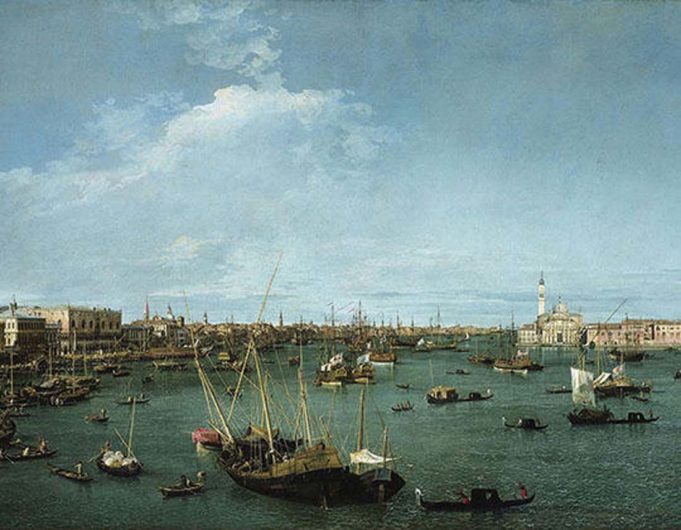By now you’ve seen promotional material for the Kimbell’s new exhibit — one of several coquettish young women with porcelain skin, painted in soft focus — and you may have (as I did) some misgivings about Casanova: The Seduction of Europe, assuming it to be merely a collection of more of the same. Powdered wigs, corpulent pink cherubs, pretty gilded things — art of the Rococo period can be a tough sell for the hard-edged and cynical modern viewer. Though we might well acknowledge its masters and their achievements, many of us might be disinclined to spend an afternoon in their company. Complicated further by the thought that these soft, pastel vignettes are to be in any way sensualized, and it’s apt to seem like someone else’s idea of a good time.
If it seems odd — to those of us who prefer our art fraught with something or other — that prettiness and pleasure might be appropriate subjects for an artist’s efforts, we could stand to take a page or two from the exhibit’s namesake. Giacomo Casanova (1725-1798) arose from a humble birth in Venice to travel the great courts of Europe, making all the while a study of romance and sensuality but also of literature, philosophy, and culture. Though his name has become a caricature of itself (having come to stand for promiscuity and otherwise unscrupulous behavior), Casanova himself was anything but frivolous. His highly regarded autobiography is considered one of the most thorough and authentic sources for understanding the social life of the European Enlightenment, and he counted some of the continent’s leading intellects amongst his friends.
Using the life and memoirs of Casanova as a framework, the Kimbell exhibit is, likewise, anything but frivolous. Loosely biographical, The Seduction of Europe is arranged thematically in such a way as to showcase some of the 18th century’s most magnificent artworks. And though there are more than a few fat cherubs on immodest display, the exhibit succeeds in contextualizing the buttercream richness of the Rococo against the often rough emergence of our modern society from a European context that could be brutal and unforgiving.
As Casanova’s personal adventures took him from his home in Venice to Paris, London, and back to Venice (where his licentious behavior eventually ran him afoul of the city fathers and landed him in prison), the exhibit organizes the biographical and geographical details of a well-traveled life into spheres of activity, such as “The Theater of Identity,” “The Adventure of Travel,” and “Amorous Pursuits.” An effective curatorial device, the arrangement of the artworks accordingly leaves room for them to stand on their own while still participating in the narrative thread.
Of particular note are the set of vedute, or city views, of Venice by the Italian painter Canaletto that usher visitors into the exhibit, communicating with painstaking detail and photographic realism the richness of the City of Water at its cultural height.
You will want to spend some time with the set of six Carceri d’invenzione, or “Imaginary Prisons” etchings, by Piranesi, a Foucauldian nightmare of tortuous interiors where the body of the accused is dwarfed and consumed by the looming machinery of the State.
An enormous set of decorative panels by Francois Boucher (including “Venus at Vulcan’s Forge”) has been a part of the Kimbell’s permanent collection, but it feels more at home in this exhibit than ever.
The decorative arts — fashion, furniture, and stunning tableware — round out an immersive experience that presents a compelling portrait of the upper echelons of European society as it barreled toward the revolutions and upheavals of the 19th century.
And what of seduction? Artists of the 18th century often couched sensuality in the narratives of classical mythology to avoid scandalizing their patrons, and there are plenty of examples of sex on the sly. To really get your money’s worth, though, and particularly if your appetites lean toward the louche, you will want to march gamely into the well-labeled side corridor where a dozen erotic miniatures by Claude-Louis Desrais may be viewed (under magnifying glass) in relative privacy.
The tour of Casanova’s Europe ends with a gallery of rulers and prominent intellectuals that the traveler counted among his influences and friends. The bust of Voltaire by Jean-Antoine Houdon captures the wit and intellect of the Enlightenment philosopher in his last years.
An excellent self-guided audio tour is available and included with the ticket price for non-members.
Casanova: The Seduction of Europe
Thru Dec 31 at the Kimbell Art Museum, 3333 Camp Bowie Blvd, FW. Free-$16. 817-332-8451.












